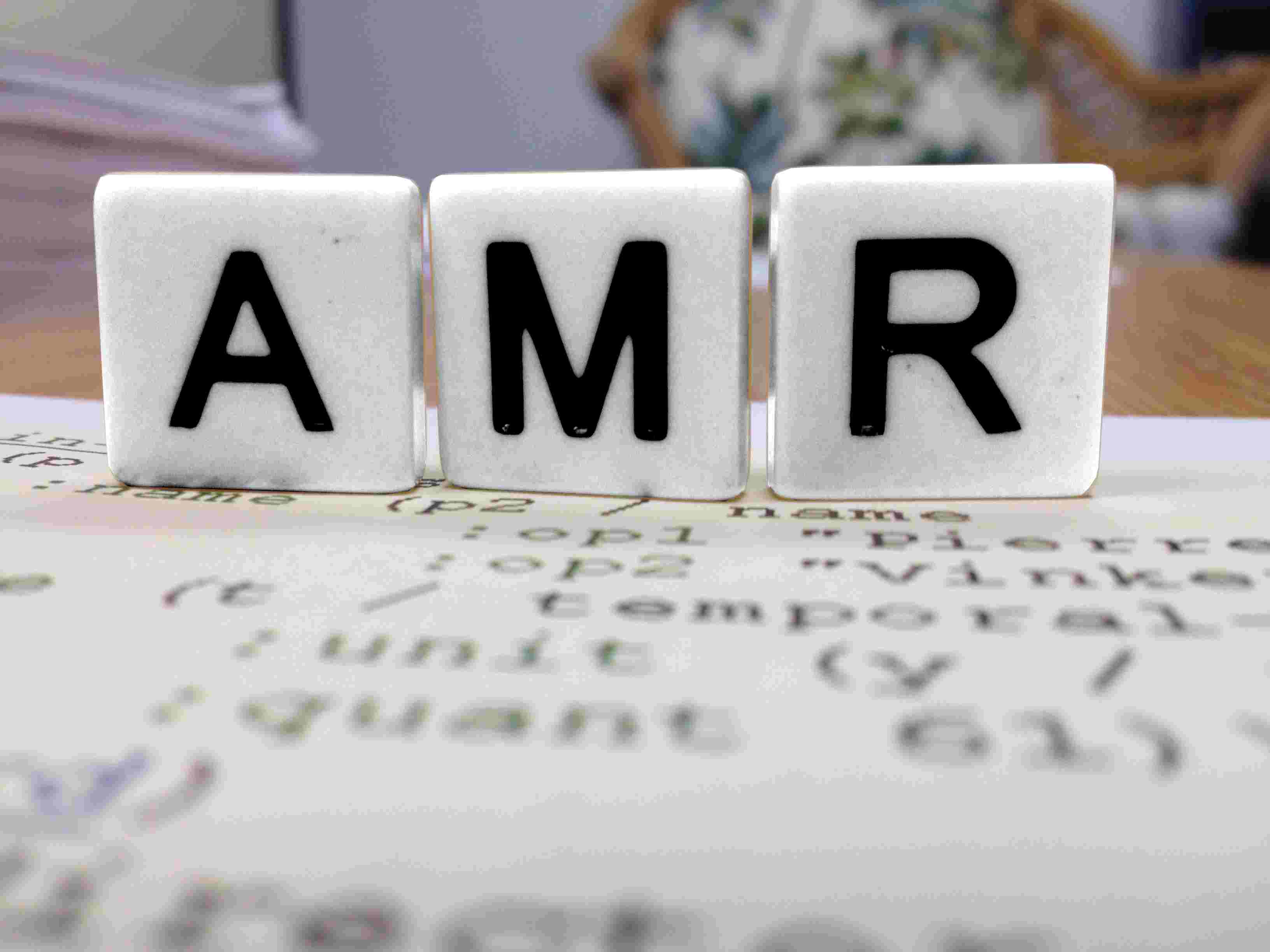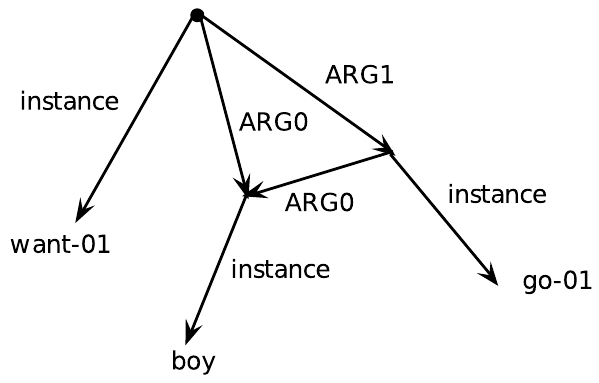

Each AMR is a single rooted, directed graph. AMRs include PropBank semantic roles, within-sentence coreference, named entities and types, modality, negation, questions, quantities, and so on. These two documents describe the AMR language:
- Paper (8 pages). "Abstract Meaning Representation for Sembanking" (L. Banarescu, C. Bonial, S. Cai, M. Georgescu, K. Griffitt, U. Hermjakob, K. Knight, P. Koehn, M. Palmer, N. Schneider), Proc. Linguistic Annotation Workshop, 2013.
- AMR 1.1 Specification, also in pdf (57 pages).
As a simple example, we represent "The boy wants to go" as:
(w / want-01
:ARG0 (b / boy)
:ARG1 (g / go-01
:ARG0 b))
Note that the variable b appears twice, once as the :ARG0 of want-01, and once as the :ARG0 of go-01. This same AMR can also be viewed as a feature structure graph:

We represent "About 14,000 people fled their homes at the weekend after a local tsunami warning was issued, the UN said on its Web site" as:
(s / say-01
:ARG0 (g / organization
:name (n / name
:op1 "UN"))
:ARG1 (f / flee-01
:ARG0 (p / person
:quant (a / about
:op1 14000))
:ARG1 (h / home
:poss p)
:time (w / weekend)
:time (a2 / after
:op1 (w2 / warn-01
:ARG1 (t / tsunami)
:location (l / local))))
:medium (s2 / site
:poss g
:mod (w3 / web)))
We have also developed disjunctive AMR, a packed representation for storing an exponential number of AMRs.